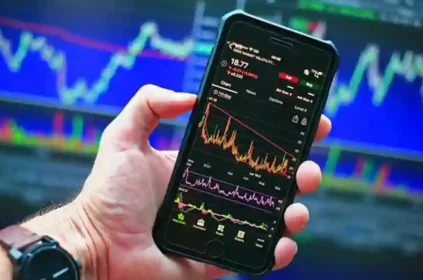In the realm of forex trading, where market conditions are constantly evolving and dynamic, the concept of asset allocation serves as a fundamental pillar for optimizing trading strategies and managing risk effectively. Asset allocation refers to the distribution of investment capital across different assets or currency pairs based on various factors such as market conditions, risk tolerance, and investment objectives. In the context of forex robot trading, dynamic asset allocation strategies play a crucial role in adapting to changing market dynamics and maximizing trading performance. In this article, we delve into the concept of dynamic asset allocation strategies for forex robot trading, exploring their principles, applications, and advantages.
Understanding Dynamic Asset Allocation:
Dynamic asset allocation involves adjusting portfolio allocations in response to changing market conditions, economic factors, and performance metrics. Unlike static asset allocation strategies, which maintain fixed allocations over time, dynamic asset allocation strategies actively monitor market trends and adjust allocations accordingly to optimize trading performance and manage risk effectively.
Key principles of dynamic asset allocation include:
- Adaptability: Dynamic asset allocation strategies are adaptable and responsive to changing market conditions. By continuously monitoring market trends, economic indicators, and performance metrics, dynamic asset allocation strategies can adjust portfolio allocations to capitalize on emerging opportunities and mitigate potential risks.
- Diversification: Dynamic asset allocation strategies emphasize diversification across different assets or currency pairs to spread risk and reduce portfolio volatility. By allocating capital to a diverse range of assets, dynamic asset allocation strategies aim to achieve optimal risk-adjusted returns and minimize the impact of adverse market movements.
- Risk Management: Dynamic asset allocation strategies prioritize risk management and capital preservation. By incorporating risk management techniques such as stop-loss orders, position sizing, and portfolio rebalancing, dynamic asset allocation strategies seek to minimize downside risk and protect capital during periods of market volatility.
Applications of Dynamic Asset Allocation in Forex Robot Trading:
Dynamic asset allocation strategies have several applications in forex robot trading, including:
- Trend Following: Dynamic asset allocation strategies can allocate capital to currency pairs or trading strategies based on prevailing market trends. By identifying trends and momentum indicators, forex robots can dynamically adjust portfolio allocations to capitalize on upward or downward price movements and maximize trading profits.
- Volatility Management: Dynamic asset allocation strategies can adjust portfolio allocations in response to changes in market volatility. During periods of high volatility, forex robots may reduce exposure to volatile currency pairs or trading strategies to minimize risk. Conversely, during periods of low volatility, forex robots may increase exposure to take advantage of potential trading opportunities.
- Event-based Allocation: Dynamic asset allocation strategies can allocate capital based on economic events, geopolitical developments, or news releases. By analyzing the impact of events on currency pairs and market sentiment, forex robots can adjust portfolio allocations to position themselves for potential market movements and mitigate risk.
- Performance-based Allocation: Dynamic asset allocation strategies can allocate capital based on the relative performance of currency pairs or trading strategies. By analyzing historical performance metrics such as returns, drawdowns, and Sharpe ratios, forex robots can allocate more capital to assets with strong performance and reduce exposure to underperforming assets.
Advantages of Dynamic Asset Allocation in Forex Robot Trading:
Dynamic asset allocation offers several advantages for forex robot trading:
- Adaptability to Market Conditions: Dynamic asset allocation strategies are adaptable and responsive to changing market conditions. By adjusting portfolio allocations in real-time, forex robots can capitalize on emerging opportunities and mitigate potential risks, leading to improved trading performance.
- Risk Management: Dynamic asset allocation strategies prioritize risk management and capital preservation. By incorporating risk management techniques such as stop-loss orders and position sizing, forex robots can minimize downside risk and protect capital during periods of market volatility.
- Optimization of Trading Performance: Dynamic asset allocation strategies optimize trading performance by allocating capital to currency pairs or trading strategies with the highest potential for returns. By analyzing market trends, economic indicators, and performance metrics, forex robots can dynamically adjust portfolio allocations to maximize trading profits.
- Diversification: Dynamic asset allocation strategies emphasize diversification across different currency pairs or trading strategies to spread risk and reduce portfolio volatility. By allocating capital to a diverse range of assets, forex robots can achieve optimal risk-adjusted returns and minimize the impact of adverse market movements.
Conclusion:
In conclusion, dynamic asset allocation strategies play a crucial role in optimizing trading performance and managing risk effectively in forex robot trading. By adjusting portfolio allocations in response to changing market conditions, economic factors, and performance metrics, dynamic asset allocation strategies enable forex robots to capitalize on emerging opportunities and mitigate potential risks. While dynamic asset allocation requires careful monitoring and analysis of market trends and indicators, the benefits of adaptability, risk management, optimization of trading performance, and diversification make it a valuable tool for achieving consistent profitability in the dynamic and competitive forex market. As forex robot technology continues to evolve, incorporating dynamic asset allocation strategies into trading strategies will be essential for staying ahead of the curve and achieving long-term success.









